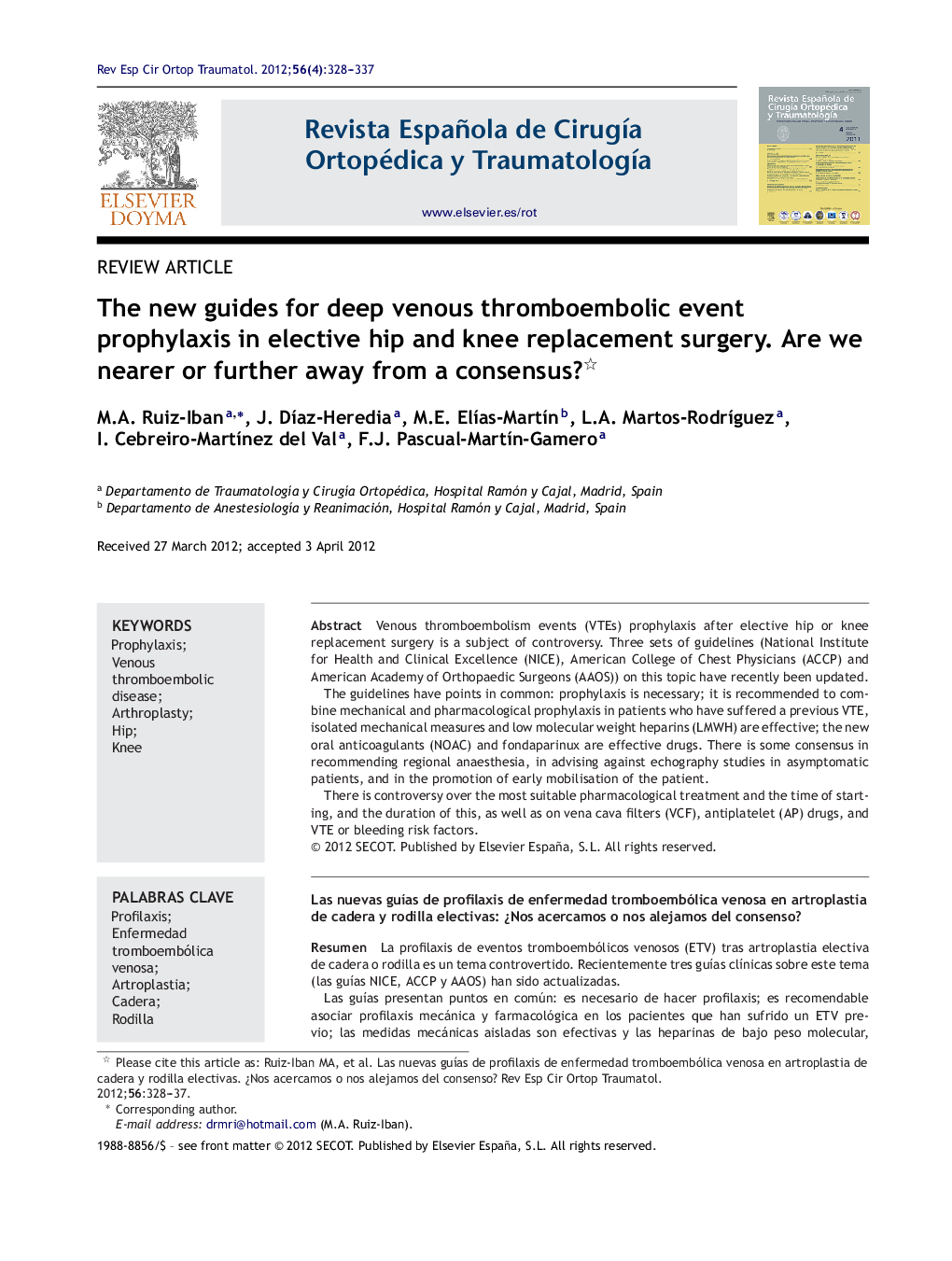| کد مقاله | کد نشریه | سال انتشار | مقاله انگلیسی | نسخه تمام متن |
|---|---|---|---|---|
| 4087432 | 1268037 | 2012 | 10 صفحه PDF | دانلود رایگان |

Venous thromboembolism events (VTEs) prophylaxis after elective hip or knee replacement surgery is a subject of controversy. Three sets of guidelines (National Institute for Health and Clinical Excellence (NICE), American College of Chest Physicians (ACCP) and American Academy of Orthopaedic Surgeons (AAOS)) on this topic have recently been updated.The guidelines have points in common: prophylaxis is necessary; it is recommended to combine mechanical and pharmacological prophylaxis in patients who have suffered a previous VTE, isolated mechanical measures and low molecular weight heparins (LMWH) are effective; the new oral anticoagulants (NOAC) and fondaparinux are effective drugs. There is some consensus in recommending regional anaesthesia, in advising against echography studies in asymptomatic patients, and in the promotion of early mobilisation of the patient.There is controversy over the most suitable pharmacological treatment and the time of starting, and the duration of this, as well as on vena cava filters (VCF), antiplatelet (AP) drugs, and VTE or bleeding risk factors.
ResumenLa profilaxis de eventos tromboembólicos venosos (ETV) tras artroplastia electiva de cadera o rodilla es un tema controvertido. Recientemente tres guías clínicas sobre este tema (las guías NICE, ACCP y AAOS) han sido actualizadas.Las guías presentan puntos en común: es necesario de hacer profilaxis; es recomendable asociar profilaxis mecánica y farmacológica en los pacientes que han sufrido un ETV previo; las medidas mecánicas aisladas son efectivas y las heparinas de bajo peso molecular, los nuevos anticoagulantes orales y el fondaparinux son fármacos eficaces. Hay cierto consenso en recomendar la anestesia regional, en desaconsejar estudios ecográficos en pacientes asintomáticos y en promover la movilización precoz del paciente.Hay discrepancias sobre la terapia farmacológica más adecuada y el momento de inicio y duración de ésta, sobre los filtros de vena cava, los antiagregantes y los factores de riesgo de ETV o sangrado.
Journal: Revista Española de Cirugía Ortopédica y Traumatología (English Edition) - Volume 56, Issue 4, July–August 2012, Pages 328–337